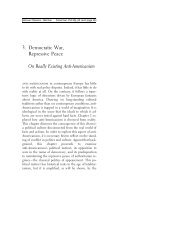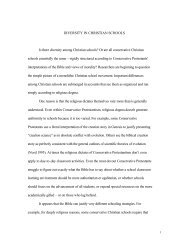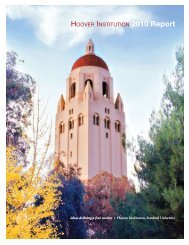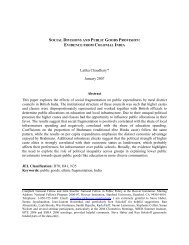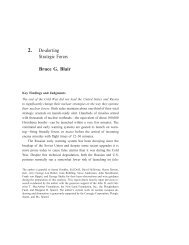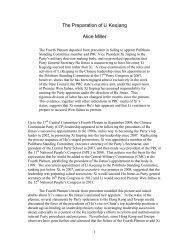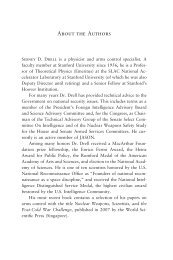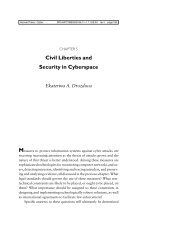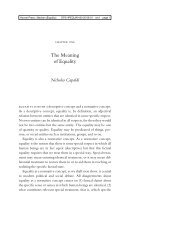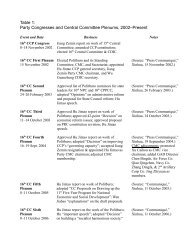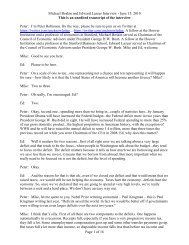A New Clandestine Service: The Case for ... - Hoover Institution
A New Clandestine Service: The Case for ... - Hoover Institution
A New Clandestine Service: The Case for ... - Hoover Institution
You also want an ePaper? Increase the reach of your titles
YUMPU automatically turns print PDFs into web optimized ePapers that Google loves.
<strong>Hoover</strong> Press : Berkowitz/Intelligence hberai ch4 Mp_117_rev1_page 117<br />
A <strong>New</strong> <strong>Clandestine</strong> <strong>Service</strong><br />
117<br />
tity like a multicolored strobe light: He could occasionally pick up<br />
worthwhile intelligence from Middle Easterners who wanted to<br />
have their own private channels to Washington. (This is not to suggest<br />
that Bob Baer wasn’t also fun to be with, more fun than the<br />
often zealously conventional Americans who predominate in the<br />
<strong>Clandestine</strong> <strong>Service</strong>.)<br />
Several case officers have told me that when “developing” Cold<br />
War Frenchmen and South Africans, the officers could at least pretend<br />
they were doing something worthwhile. Unlike the seldomseen<br />
Soviets and Communist Chinese, they could at least wine and<br />
dine these targets with greater regularity. But knowing why individual<br />
case officers and the Directorate of Operations chased various<br />
targets isn’t important now. Knowing the structure and method<br />
of standard agency operations then is important, since past practices<br />
still define the service. <strong>The</strong> agency’s fight against bin Ladinism<br />
will continue to be more myth than reality because Langley cannot<br />
escape these deficient, though easy, tactics. Never in public, and<br />
rarely in private, can senior agency officers, who, after all, attained<br />
their in-house “glory” in a thoroughly defective system, admit that<br />
these practices failed.<br />
But what follows, boiled down to its basics, is a nuts-and-bolts<br />
description of the Cold War agency at work. <strong>The</strong>re were differences<br />
here and there. “Denied-area” operations—that is, what occurred<br />
behind the Iron Curtain and in other countries where case officers<br />
confronted totalitarian security services or where the environment<br />
was considered too hazardous or politically impossible <strong>for</strong> CIA stations<br />
and bases to operate—do not involve case officers “on the<br />
street . . . developing” <strong>for</strong>eigners. But what follows is what happened<br />
when the <strong>Clandestine</strong> <strong>Service</strong> was trying to be serious<br />
against what it considered serious, accessible targets. <strong>The</strong> agency<br />
that gave us this charade, the mid- to senior-grade officers who<br />
sustained it, are the folks who today are supposed to penetrate rad-



